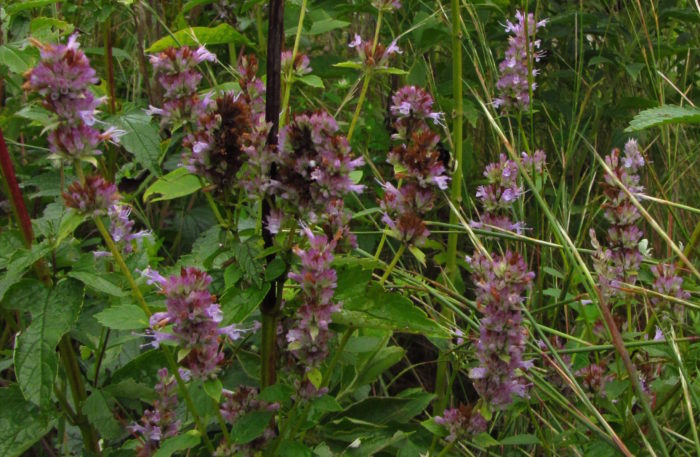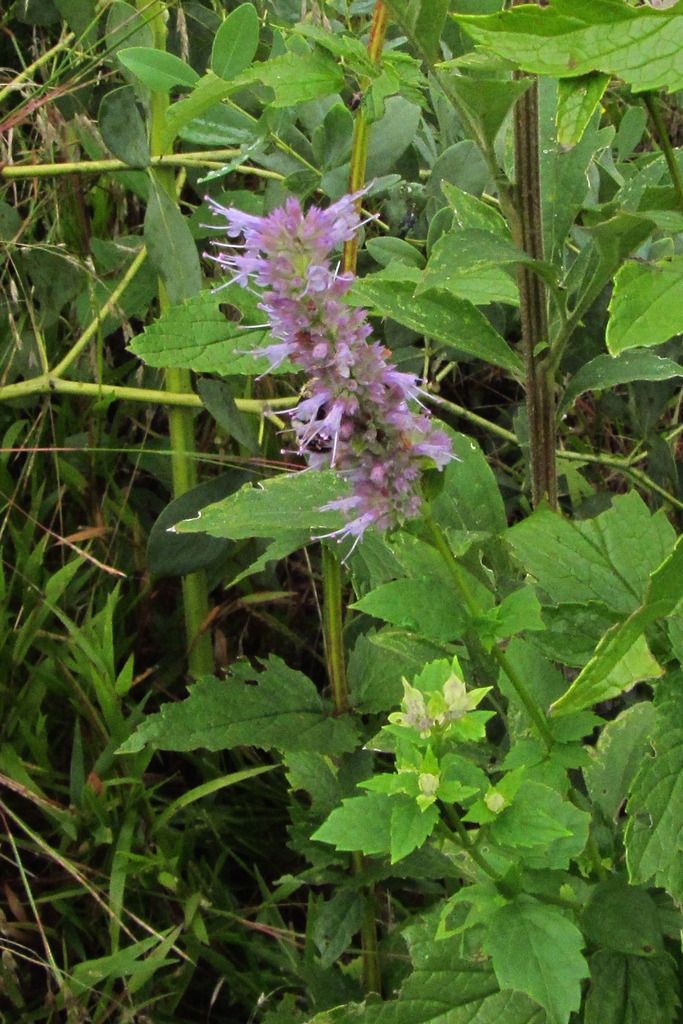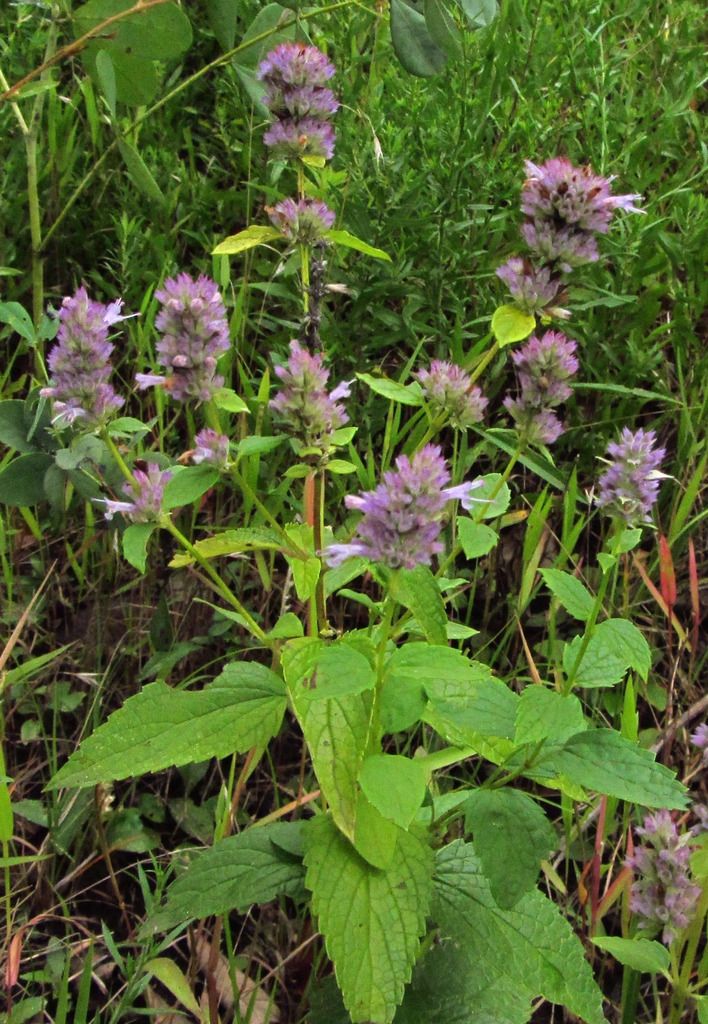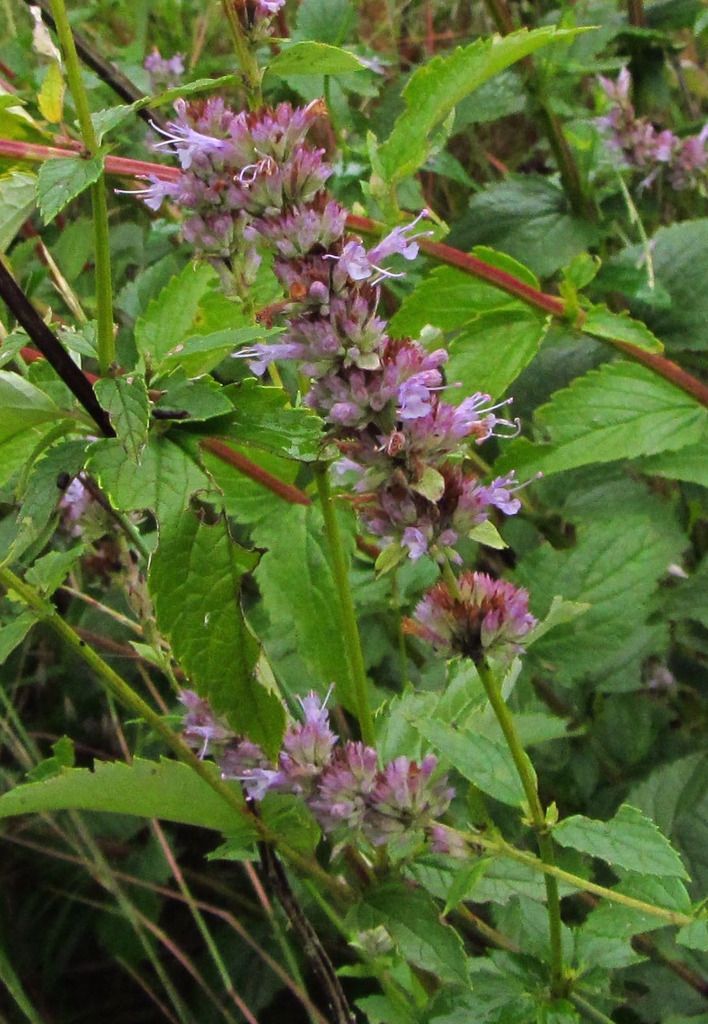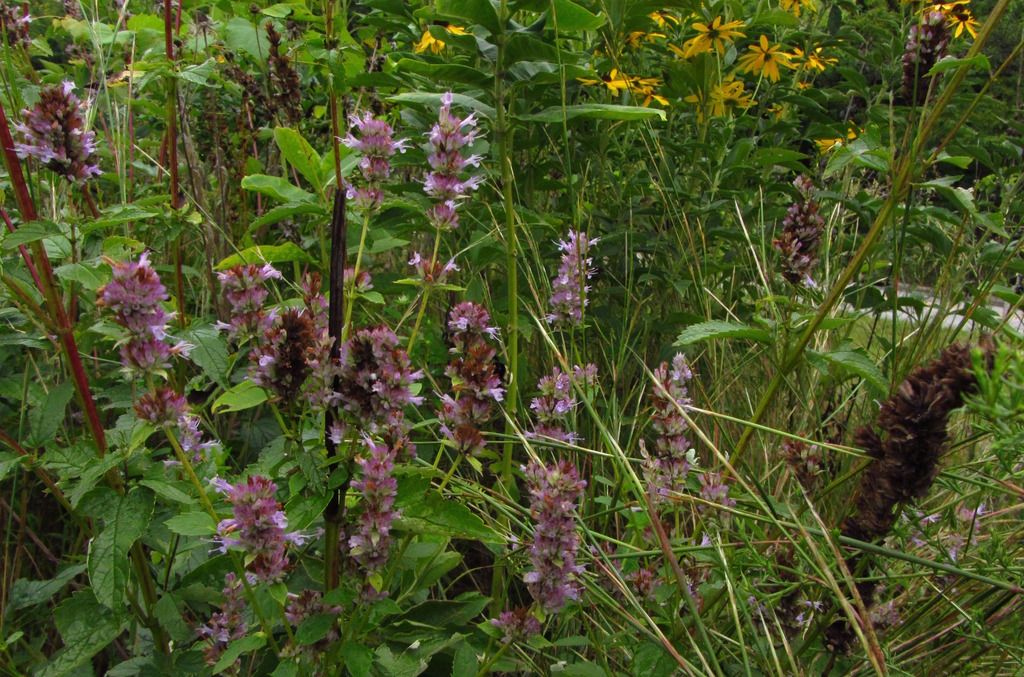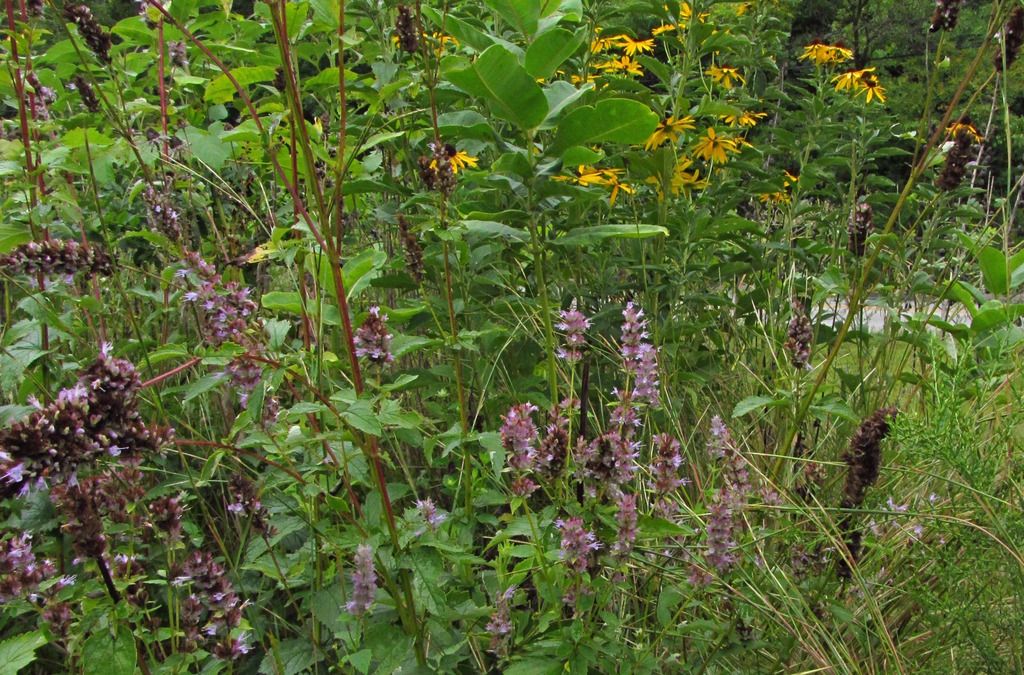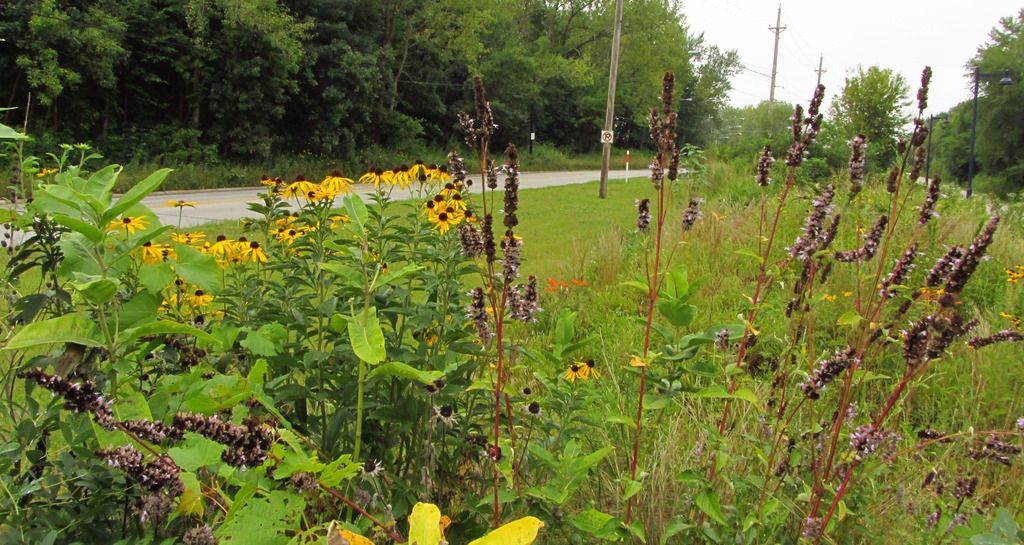This year’s unseasonably warm autumn weather inspired me to feature a plant today that typically blooms in the summer. Several colonies of Purple giant hyssop (Agastache scrophulariifolia) were in peak flower six to eight weeks ago along the Meredith bike trail between Gray’s Lake and downtown Des Moines.
This member of the mint family is native to much of North America east of the Rocky Mountains. The U.S. Fish and Wildlife Service describes it as a plant of “special value to native bees, honey bees and bumble bees.” The U.S. Department of Agriculture’s Natural Resources Conservation Service guide for this species notes that goldfinches and hummingbirds are also attracted to the flowers, and the plant is a “popular ornamental,” since its height (up to five or six feet) “makes it a good choice as a background against fencing.” It thrives in moist soil and can handle full sun or partial shade.
Purple giant hyssop is a close relative of blue giant hyssop, also known as anise hyssop, which Bleeding Heartland featured last year. According to the Minnesota Wildflowers website, purple giant hyssop has a green calyx (the “cup-like whorl of sepals” that holds the flower) and green on the underside of leaves, while blue giant hyssop has a blue-violet calyx and a “whitish” color on the underside of its leaves. Iowa naturalist and photographer Leland Searles gave me an easier tip: crush a leaf. If it smells like licorice, you’ve found anise hyssop.
The Minnesota Wildflowers and Friends of the Eloise Butler Wildflower Garden websites are good resources for botanically accurate descriptions of purple giant hyssop foliage, flowers, and seeds.
Purple giant hyssop tends to grow taller than anise hyssop, though some plants can be small.
Each plant “usually has several spikes” of flowers, not all of which will bloom at once.
A closer look at purple giant hyssop flowers:
Some kind of bumblebee visiting a purple giant hyssop plant:
Toward the right side of the next two pictures, some of the purple giant hyssop flower spikes have gone to seed.
A wider view of a purple giant hyssop colony. The yellow and black flowers are sweet black-eyed Susans.
Nature meets city: here the sweet black-eyed Susans are on the left and purple giant hyssop on the right.

